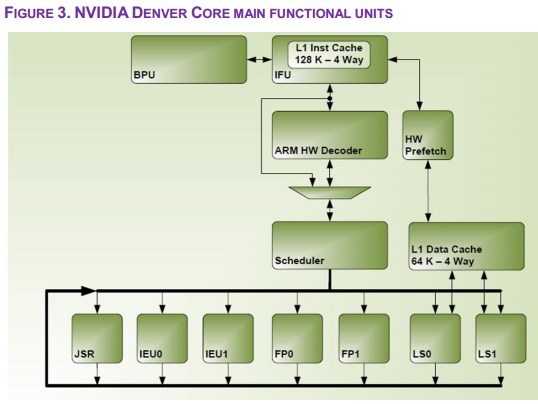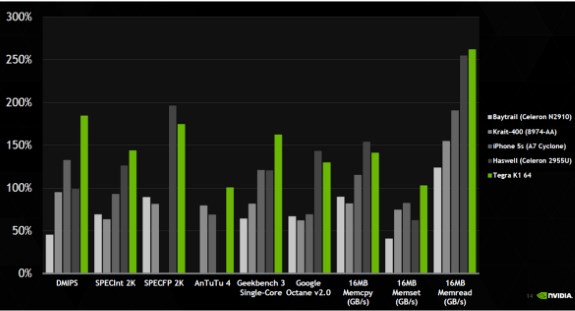
In an OoOE design, the processor itself decides which code should be executed at any given cycle which makes these designs faster than in-order counterparts. The drawback however is that OoOE designs are larger and use more power consumption. NVIDIA did things a little different by crafting "Project Denver", an in-order architecture that uses a dynamic optimization program that runs on one of the two CPUs. This program calculates and optimizes the most efficient way to execute code and stores the data inside a 128MB memory buffer. Often used pieces of code are stored so there's no need to repeat this process over and over.
The execution engine of the 64-bit Tegra K1 is very wide, it's capable of processing up to seven instructions per cycle! NVIDIA says the 64-bit Tegra K1 will be available in frequencies of up to 2.5GHz. Overall this is shaping up to be one of the more interesting ARM designs in a long while but we'll have to wait for the first third-party benchmarks to see if NVIDIA can deliver what it promises. According to the company itself, its Tegra K1 can deliver performance similar to a low-end Intel Haswell processor. Unfortunately, NVIDIA doesn't mention any specifics about power draw.
Speaking about energy efficiency, NVIDIA also mentions that Denver will have new low latency power-state transitions and extensive power-gating and dynamic voltage and clock scaling based on workloads.
The 64-bit Tegra K1 is anticipated to show up in mobile devices later this year.


Sources: HotHardware and NVIDIA